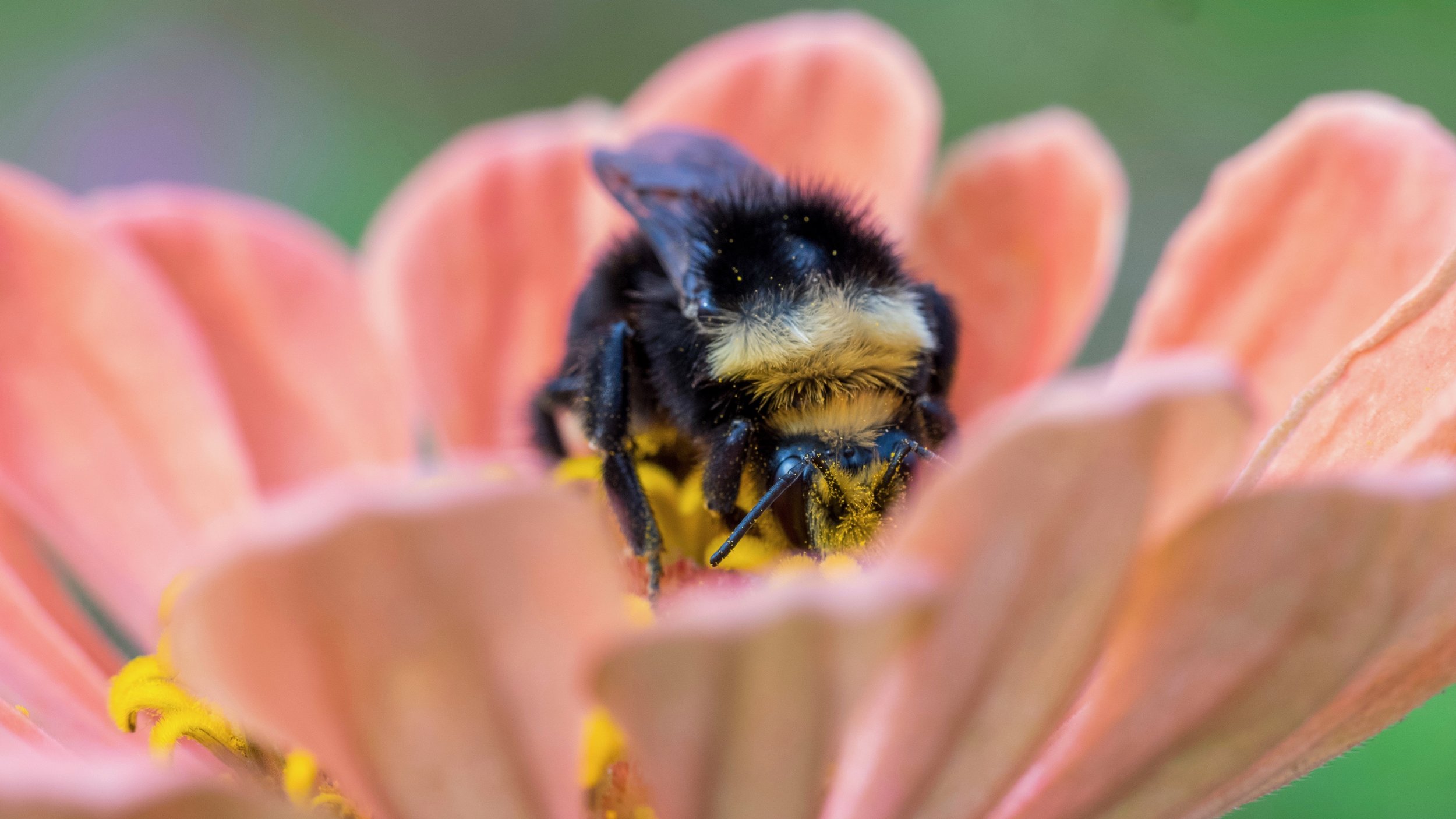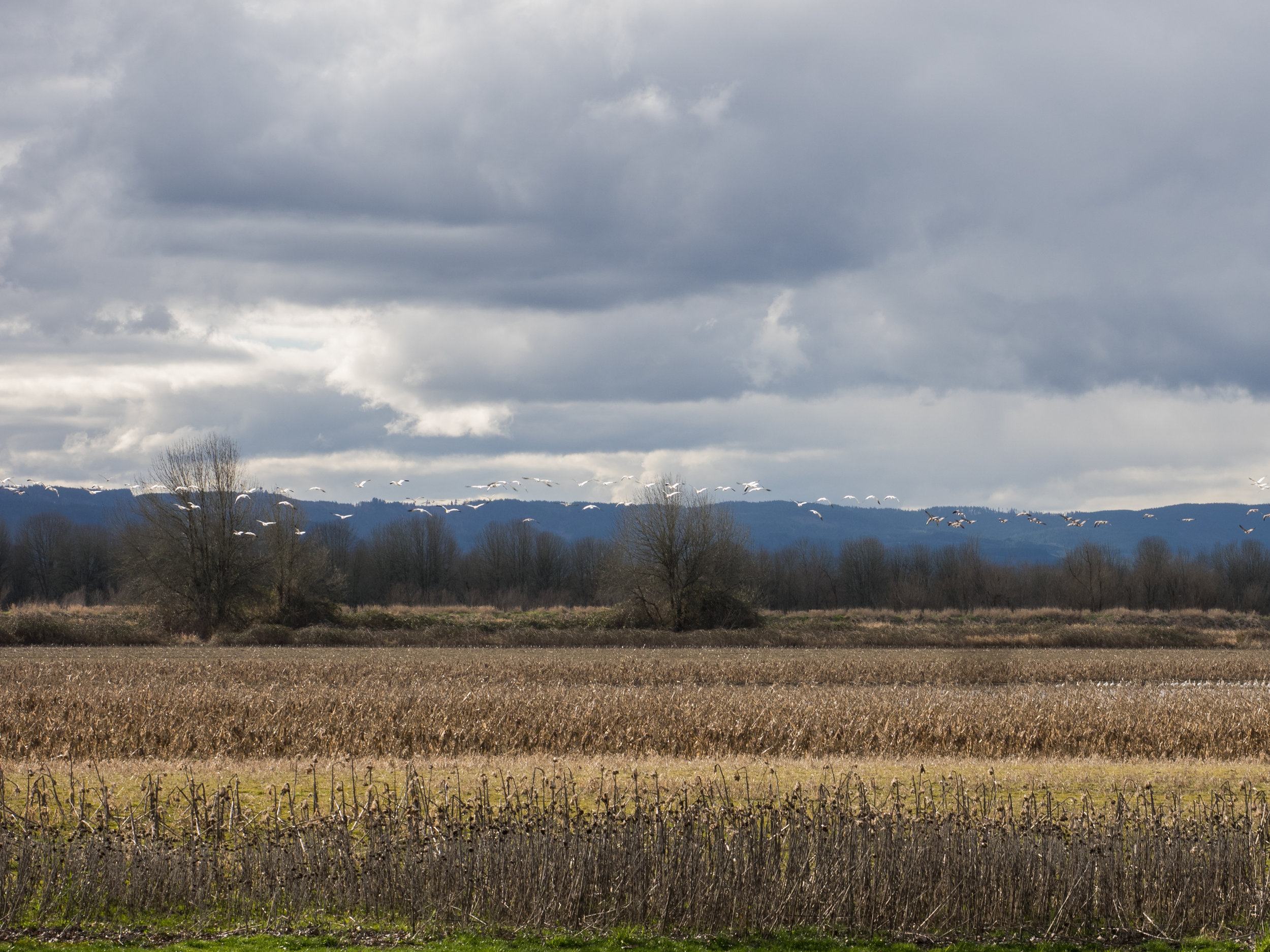Ever wondered where bees go in the winter? With over 20,000 species of bee worldwide, there are so many different strategies for surviving the cold months! We’ll take a look at the winter survival strategies of European honeybees, native bumblebees, and native solitary bees here.
Not All Bees!
There are so many things that make honey bees unique. The sophistication of their social structure is unparalleled in the bee world and has led them to become oddballs in many senses. As the only producers of harvestable honey and beeswax in North America, these sweet delights are largely responsible for the fame of Apis mellifera and may explain why they are often the only bees people think (or even know) about.
Since honey bees are so unique, however, using them as a model for all bees can be problematic. Of the thousands of bee species in North America, none have the same habitat requirements as their distant European cousin, and our native bees often get “left out in the cold”. Understanding North American bees will be of utmost importance since as we now know, promoting bee species diversity is critical for effective pollination of both crops and wild plants.
Differences aside, all bees in North America must somehow account for the time of year when there are no flowers in bloom. Winter is a treacherous and resource-scarce period for many animals, and the diverse ways different bees handle these challenges is a true representation of the ‘ingenious’ hand of natural selection.

European Honeybees
The non-native honeybee is the only ‘perennial’ bee species in North America that actively survives the winter as a colony. They are able to do this because they spend most of their active season preparing for these food-less months, gathering nectar, and turning it into spoil-proof food (honey!).
The role of the summer worker is, simply put, to bust butt! In their approximate four week lifespans, they run themselves ragged so the winter generation can survive. Not only are they foraging tirelessly for nectar and processing it into honey, but they are also gathering loads and loads of pollen to raise extra fat winter bees.
On the flip-side, the role of a winter worker is to survive. Their extra fat bodies allow them to live for several months as they cluster around their queen. Fueled by honey, they vibrate their flight muscles to generate heat while the bees in the center rotate outwards and the bees at the outside rotate inward (like penguins in the Antarctic). When temperatures are really low, they enter a state called torpor, where they slow down so much, they almost look dead! They aren’t quite hibernating, but this allows them to use less energy, and conserve their finite food resource.
Honeybees spend the entire winter as shut-ins, remaining inside their hive, only emerging to do “cleansing flights” on the sunniest days. Once spring comes round and daytime temperatures are above 55 degrees, the remaining workers begin early spring behavior, cleaning mold and the dead out of the hive, foraging for pollen, and caring for the queen and brood to build up for another season.

Native Bumblebees
The closest native relative to the honeybee, bumblebees are the only colony-dwelling bees in North America. Colonies are comprised of much fewer individuals, thus, the species in this genus have their best shot for survival by being ‘annuals’. At the end of their active season, the colony produces many queens, who once mated will hibernate through the winter underground as the only surviving individuals from their parent colony.
The lucky queens who hibernate successfully without disturbance will emerge from their burrows when spring temperatures signal it is time for them to start a colony of their own. The season of the queen begins with searching for an optimal nesting site while visiting flowers to sip nectar for energy. Nesting sites for bumblebees are scarce, and even if a queen finds a suitable site, the chances that she start a successful colony are slim!
After locating a suitable site, she must play both queen and worker, starting the risky business of leaving the nest untended in order to forage for the few young she can produce on her own. If a queen makes it past this stage, she can stay inside the nest and focus on laying eggs while her daughters (the workers) take care of the rest of the work until winter rears its cruel head once more.

Solitary Bees
Most bees in North America are solitary. During the warm season, a single, mated female will tend a nest in a tunnel. Depending on the species, the tunnel may be in a network underground, or in an abandoned hole off the ground left behind by beetles, woodpeckers, or even humans (check it out!). She will work through an active season of a bit over a month until her death, leaving behind several offspring with enough food to help them develop properly through the rest of the warm season.
Depending on the timing of the adult’s active season, the young left behind will overwinter as fully formed adults in their cocoons, or as diapause larvae, waiting to pupate until spring. Essentially, bees active in earlier spring (eg: mason bees) will have ample time to pupate in the summer and will overwinter as hibernating adults in their cocoons. The young left behind by bees active in the summer (eg: leafcutting bees) will have less time to develop, and will overwinter as hibernating larvae. Either way, these bees will emerge out of their burrows at the same active time as their parents the year before and will begin the process again.
Wrapping It Up
Just like with people, we should be celebrating diversity with bees. Each species is a very important piece of the puzzle that is ecosystem stability. Understanding their life cycles, and how they make it through the most tumultuous time of year is just one step toward improving local habitat for these essential critters. Lest we forget, excluding those introduced to the continent by us, most bees have a much longer history with this land than any human!
